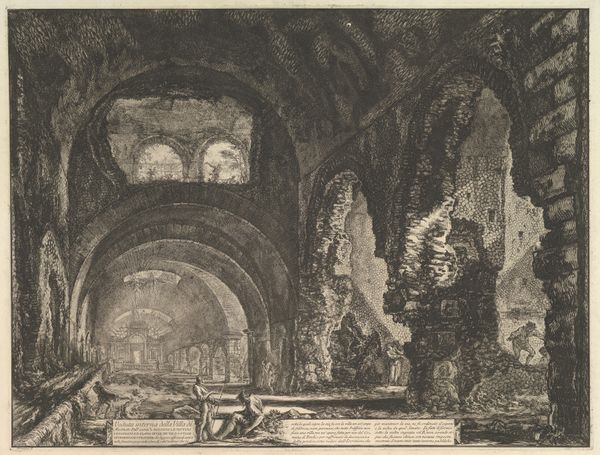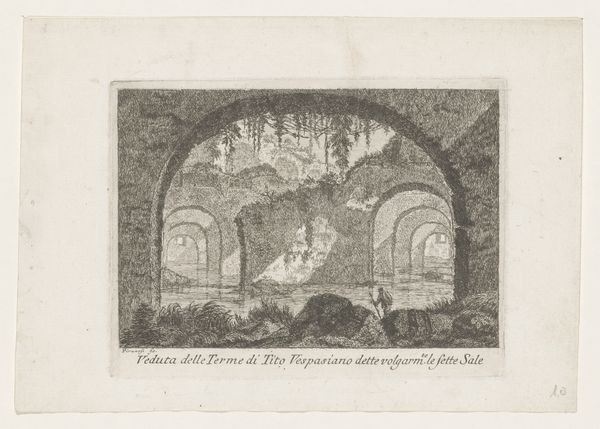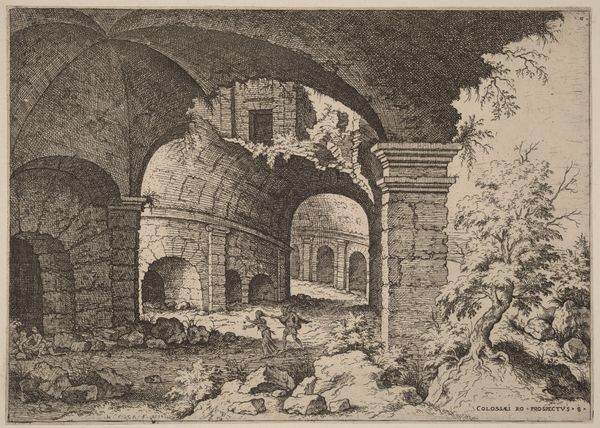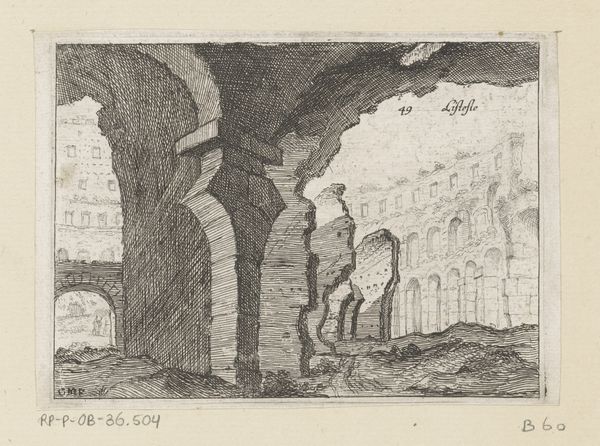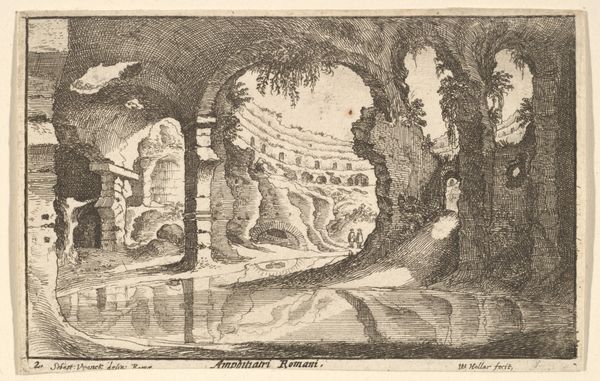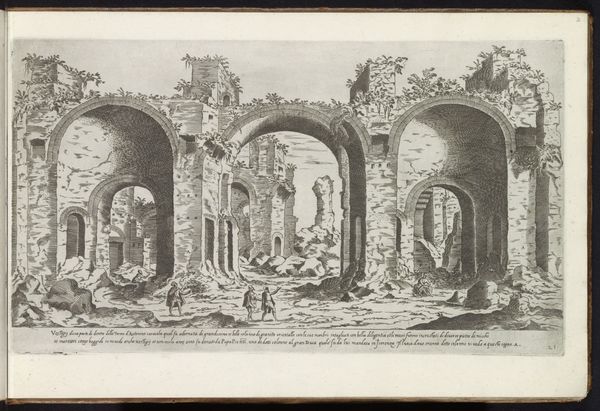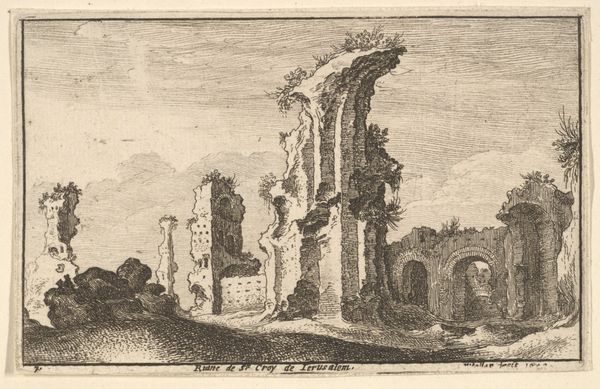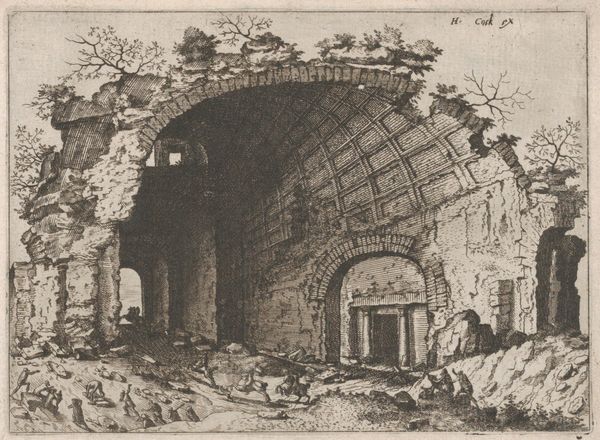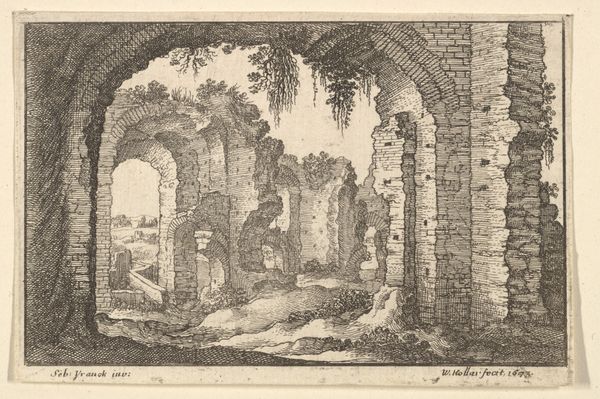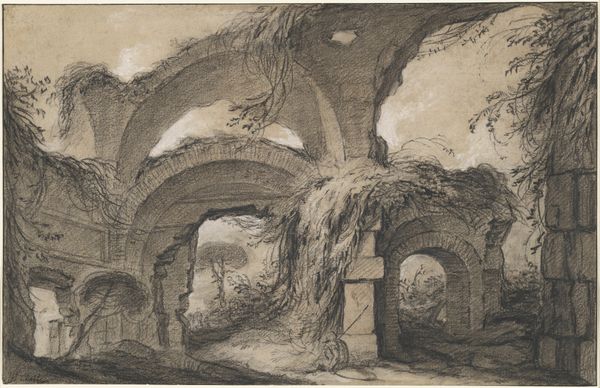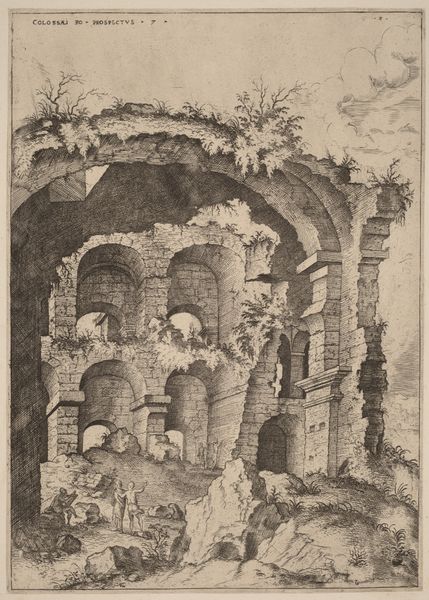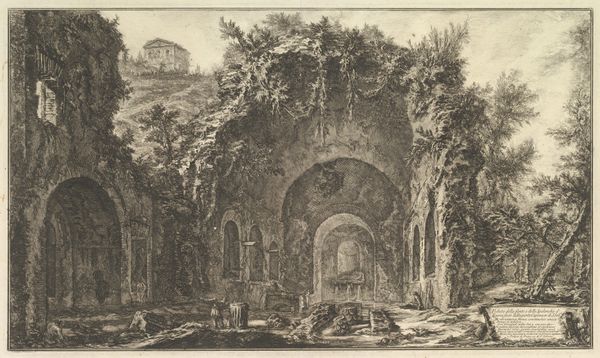
drawing, print, etching, engraving, architecture
#
drawing
#
baroque
# print
#
etching
#
landscape
#
arch
#
pen work
#
engraving
#
architecture
Dimensions: Sheet: 2 3/4 × 4 3/16 in. (7 × 10.7 cm)
Copyright: Public Domain
Wenceslaus Hollar etched this depiction of the Roman ruins at Tivoli in 1673. Here, the archway emerges as a potent symbol, initially serving as a triumphal architectural element celebrating Roman power and imperial expansion. The arch, promising passage and transformation, appears across cultures, from ancient city gates to religious portals. Consider the arch's evolution: in Renaissance paintings, arches frame sacred scenes, while in contemporary art, they might symbolize barriers or thresholds. This echoes the ancient Roman use where entering under the arch meant entering a new world. Notice how the crumbling state of the arches in Hollar's etching evokes a sense of melancholy and decline, engaging us on a deeply subconscious level by inviting contemplation on themes of transience and the inevitable decay of even the most formidable structures. This cyclical pattern of rise and fall, mirrored in the arch's shifting significance, reflects our own complex relationship with history. Symbols such as these echo and transform, resurfacing across time.
Comments
No comments
Be the first to comment and join the conversation on the ultimate creative platform.
